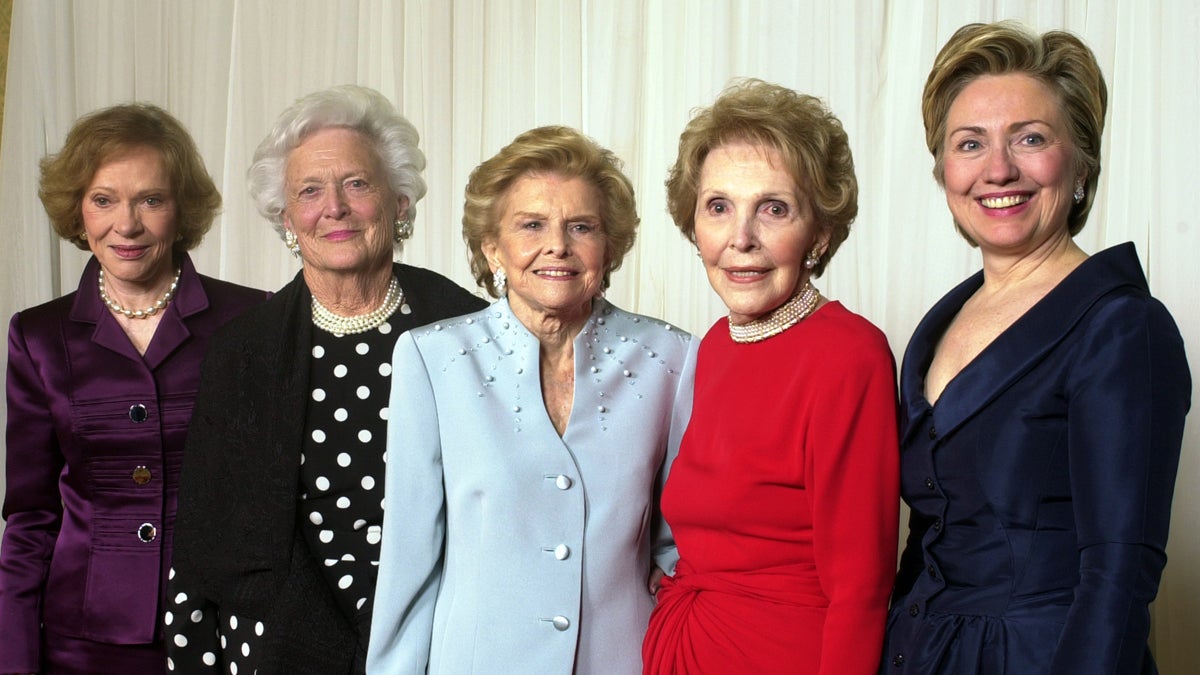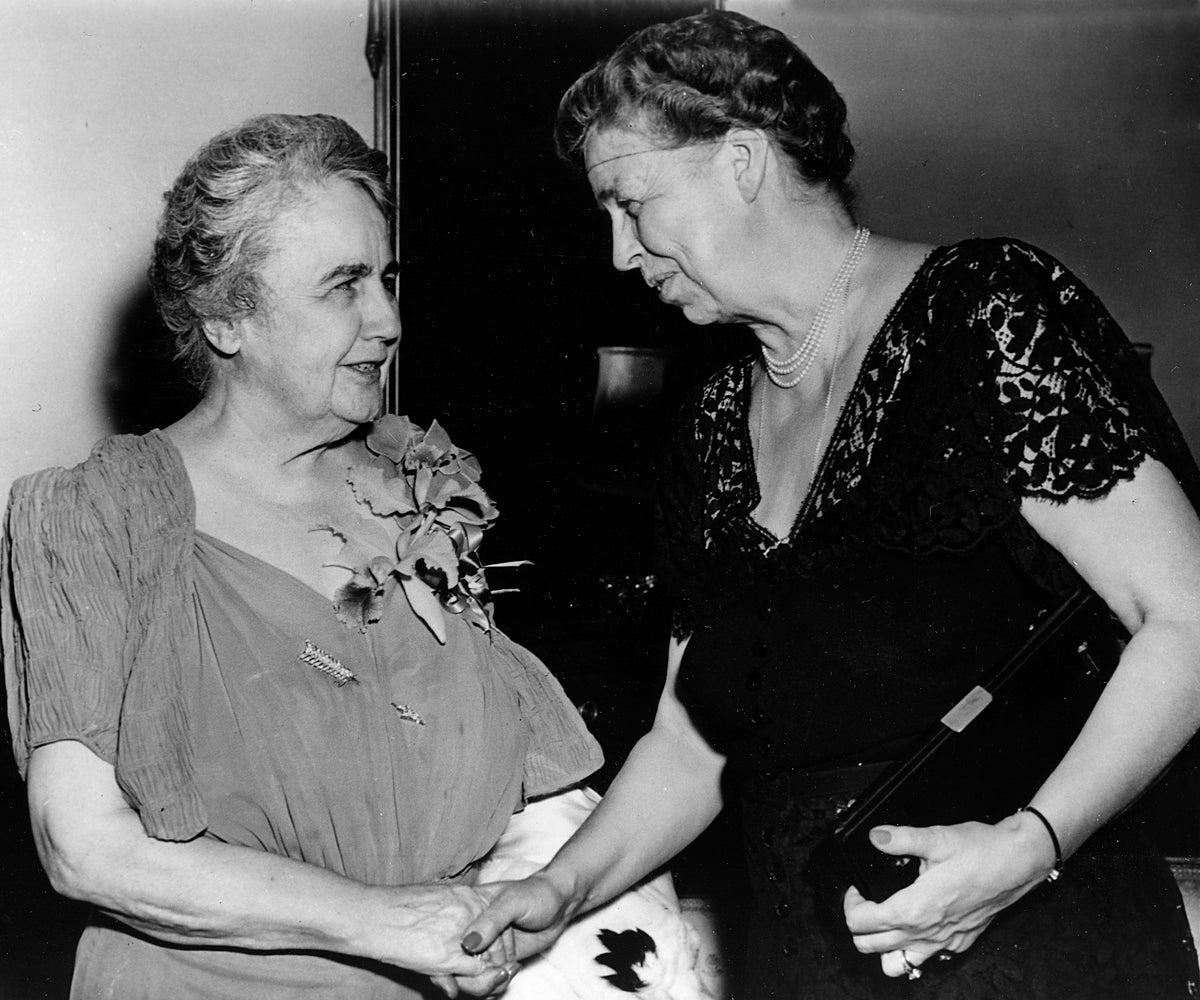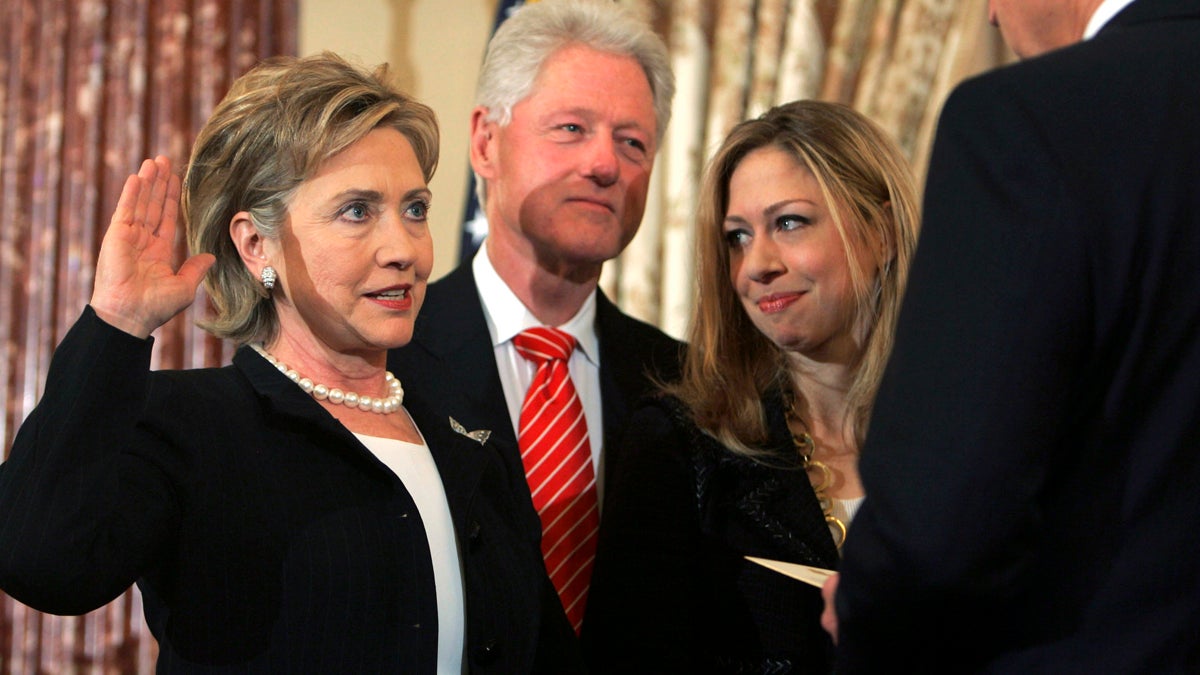A look at women who’ve had a strong influence over the presidency
Listen
Former first ladies get together in 2003 for a fundraising event. From left are Rosalynn Carter
Specifically, first ladies.
In 1919, just after WWI ends, Woodrow Wilson is in the midst of his second term as president when has a series of strokes that paralyze the left side of his body. As the story goes, Edith Wilson and her husband’s doctors decide to hide the president’s illness. Until the end of his term, he governs from his bedroom, and she acts as a gatekeeper.
“Her most important power is determining access — who gets to see the president,” said Gil Troy, a professor of history at McGill University and author of Mr. and Mrs. President: From the Trumans to the Clintons. “And then over the course of months and months, she increasingly becomes one of the key people who’s making decisions.”
When the public starts to find out, the arrangement doesn’t go over so well. “People start calling her Mrs. President, and they don’t say it lovingly,” Troy said.
A long line of influential first ladies
If elected in November, Democratic presidential nominee Hillary Clinton would be America’s first female president. But a number of women have had a strong influence over the presidency in the past, including Edith Wilson and Clinton herself.
“Once upon a time, rather than earning power on your own, as Hillary Clinton is trying to do and has done before, you earned your power through your Mrs. Degree, through being married to the right person,” Troy said.

Former first ladies Edith Wilson, left, and Eleanor Roosevelt exchange greetings at a dinner given for Roosevelt by the women’s joint congressional committee in Washington, D.C., on March 14, 1946. (AP Photo)
First ladies really came into this power in the 20th century, Troy says. A decade after Edith Wilson, there was Eleanor Roosevelt. Since her husband, President Franklin Delano Roosevelt, used a wheelchair and didn’t want to be seen with it in public, she became a sort of emissary for him, says Ruth Mandel, director of the Eagleton Institute of Politics at Rutgers University.
“She became his eyes and ears and his legs and went around the country listening, reporting back, [and] selecting information about race issues, labor issues, [and] poverty,” all things Eleanor Roosevelt was personally concerned with, Mandel said. Later in life, Eleanor Roosevelt was appointed as a delegate to the United Nations General Assembly, where she chaired the committee that wrote the Universal Declaration of Human Rights.
There were more influential first ladies after Roosevelt, including Lady Bird Johnson, Rosalynn Carter, and Nancy Reagan, who controlled her husband’s schedule and was said to be fiercely protective of him. That meant “not only protecting his health and daily well-being, but protecting him from staff members she thought might not be giving him good advice or serving him well,” Mandel said.
And then in the 1990s, there was Hillary Clinton. As first lady, she led a controversial and unsuccessful push for health care reform, a shift towards policy that made some people uncomfortable.
Even before that effort, Clinton’s ambitions came up in a 1992 interview with Katie Couric.
“They say you’re the power behind the throne, overly ambitious,” Couric said. “What’s your reaction to comments such as those?”
“Well, I regret them, because I think they come out of a sense of stereotypes about women’s roles,” Clinton said.
She did draw a line between herself and her husband, saying he’s the one who was elected and made official decisions. “But I care about what he does, and I care about what happens, and I want to participate,” Clinton said.

Hillary Clinton is sworn in as Secretary of State in 2009. (AP Photo/Lawrence Jackson)
Clinton, like Nancy Reagan, was compared in newspapers to Lady Macbeth, the conniving character from the Shakespeare play who controls her husband and helps him cover up his misdeeds.”There’s always this kind of discomfort with the First Lady getting too close to the power,” Troy said. “You can’t fire her. You can’t have the usual checks and balances. Can you trust her?” Troy said.
He says there were also male chiefs of staff who got a reputation for being too close to the president, but that ideas about a woman’s place in the world were likely a factor in this pushback on first ladies.
Those traditional ideas of gender had been changing throughout the 20th century, as a new mantra emerged: “in her own right.” That meant women wanted positions of authority and power on their own, not through a male figure, says Mandel.
By the 1990s, there were a growing number of female cabinet members and legislators. And when Clinton launched her own bid for U.S. Senate in the late 90s, she didn’t get the same kind of blowback she did as first lady, Troy says.
Now, Clinton will likely be the first woman chosen as the nominee of a major party for President of the United States.
Although stereotypes about women haven’t disappeared, Ruth Mandel says there’s no question things have changed. “If you’re a little girl, you can aspire to things that were just not imaginable 50, 60, 70 years ago,” she said.
Like becoming president, rather than being married to one.
WHYY is your source for fact-based, in-depth journalism and information. As a nonprofit organization, we rely on financial support from readers like you. Please give today.

